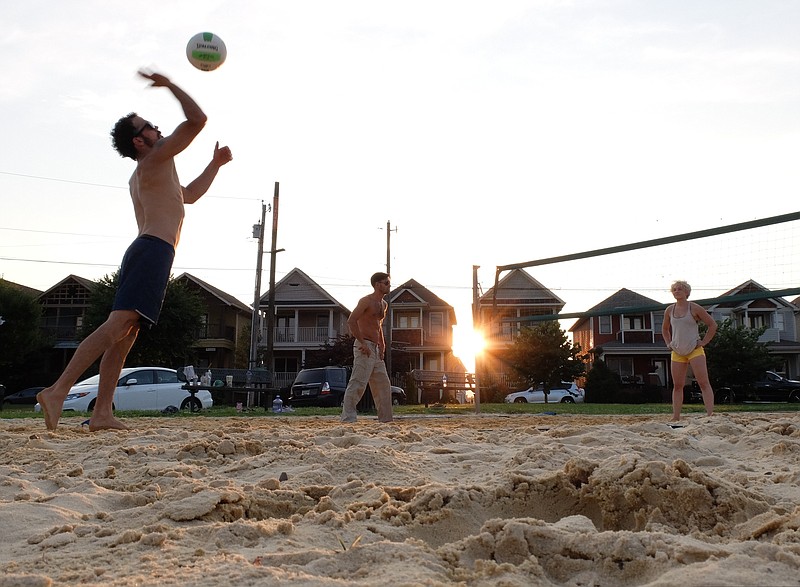In large measure, the issues that kept Chattanooga blacks down in 1968 are still with us in 2015.
That means, of course, that those same issues are keeping all of us in Chattanooga down - despite the city's renaissance, of which we are so proud.
From 2000 to 2013, poverty for black children rose from 27 percent to 38 percent.
Read more
* Report about black Chattanoogans offers bleak picture, calls for unified action* Cooper: 'Unfinished agenda' starts at home* Cook: The dream deferred in Chattanooga
Some 56 percent of black single mothers here live in poverty compared to 33 percent of white single mothers. In all, 36 percent of blacks in Chattanooga live in poverty, compared with 14.5 percent of whites. And in Chattanooga's 11 low-income neighborhoods - where 73 percent of residents are black - the average poverty rate is a whopping 63.5 percent.
Last year, the statewide average of college-ready students was 19 percent. For Brainerd and Howard, both predominantly black high schools here, the percentage of college-ready students was zero. Further, just 6 in 10 students at Howard and Brainerd even graduated.
Given these statistics, it is little wonder that while blacks made up 17 percent of Tennessee's population in 2013, they also make up 44 percent of the prison population.
In other words, between blacks and whites in Chattanooga and Tennessee, social distance has grown wider, not closer.
Ken Chilton, the author of a new 23-page report titled "The Unfinished Agenda," paints a picture of black poverty here that has grown to a generational level and is becoming its own force of nature.
Chilton, a professor at Tennessee State University's Department of Public Administration and a former head of Chattanooga's Ochs Center, wrote the report for the Chattanooga NAACP, and he blames the ever-widening gaps on complex "economic forces" and "cultural adaptations" and "benign neglect."
Let's be clear: There is nothing benign in the cancer of racism, whether it is personal or institutional.
Chilton and the NAACP are calling for an intervention on the level of Chattanooga's 1984 establishment of Venture and its resulting citywide visioning process that led to reinventing Chattanooga's economy and giving us the Tennessee Aquarium which spurred our eventual turn-around from dirtiest industrial city to a celebrated outdoor mecca.
In his report, Chilton acknowledges that too many of us don't think we can change this problem in the same way we changed our dirty air and our dying industrial town.
"When it comes to racial inclusion and social justice we don't think outside the box. We continue to ignore the problem and hope that new opportunities will trickle down to residents in Alton Park, Westside, East Chattanooga and other impoverished neighborhoods."
You may be saying to yourself: but one was buildings, this is people. How do you change hearts?
Actually, the same way. One attitude at a time.
Chilton writes that we can do it just like we made our other successes: "Only this time, we need to be inclusive. Our goal is to spark a comprehensive dialogue within the African-American community," he says. "We want to gather their insights, their opinions and perceptions, and we want to give voice to their needs."
Like it or not, our history - including our renaissance - was largely shaped by affluent white leaders who used their own money. Jack Lupton gave $11 million to seed the turnaround with the construction of the Tennessee Aquarium. Other Chattanoogans cashed in on the effects of a once-common red-lining practice of banks that had kept black areas poor and cheap. Eventually, when the city fought "blight" and offered incentives to developers, it was white developers who profited. Examples: Cameron Hill, parts of North Chattanooga, Southside.
The end result was that blacks not only were mostly left out, they were in essence starved out.
Now, elected officials and nonprofits don't necessarily intend to displace black families, but their choices to incentivize development to benefit and attract artists, software coders and entrepreneurs have the same effect. Gentrification is the polite term. The reality is less than polite. Gentrification tends not to be desegregation. Too often, it's reconstitution.
So what is the answer? Perhaps it's easier to say what isn't the answer. Benign neglect isn't the answer: We've already done that. It isn't working. And we need look no farther than Ferguson and Baltimore to see how extended neglect turns out.
Building coalitions that are mostly white or mostly black also isn't the answer. Nor is relying on yesterday's leaders. A new Venture-like group to chart Chattanooga's new future in equality needs to be far more holistic than anything we've ever taken on before.
And, yes, it will again take money. One absolute goal, though painfully slow, must be improving public education. Some mostly black neighborhoods have more adult high school dropouts than college graduates, and tragically, we closed our technical and vocational high schools. When new revenues have been proposed to improve public schools, county commissioners vote no.
All of these things combine to give us a city where a child's ZIP code - now more than ever - predicts his or her destiny.
That's not an accomplishment for any renaissance city.
